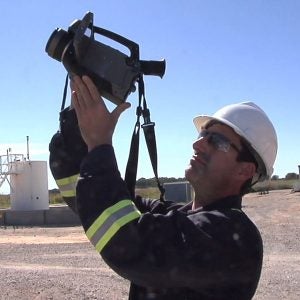This piece originally appeared on our EDF Voices blog.
Both science and environmentalism are changing – driven more and more by more collaboration and rapidly improving technology.
These developments offer tremendous opportunities, as they can reveal urgent threats much more clearly – as well as the paths to address them.
Shifting scientific research in another direction
Scientific study has traditionally happened largely on the side – disconnected from the needs of society – with laboratory groups working in competition with other groups.
A lot of great insights emerged from this model, but far too often it took years or decades for ideas to reach fruition. The problems humanity is facing today will not wait. We need a new approach.
That’s why EDF is turning this process sideways, sticking to the norms of good science while doing the work quicker, with more direct benefits.
Blending old and new approaches leads to new insights
EDF still advocates deploying good scientific methods, but we have found it possible to link projects more closely and require faster results. Scientists are motivated to do good research and make a difference – we have explicitly harnessed these dual desires.
Competition is still integral, but so is sharing results, early and often, so others can benefit more rapidly.
By reducing the time required to get results published and integrated into other studies, new insights get into the hands of people who can – and will – make changes to improve our environment and health.
Policy experts communicate with the scientists as they draw their conclusions, so they understand the data and its implications even before the research is published.
This allows the work to be effectively integrated into policy development as soon as it is publicly available – a key element of this new model.
Applying the new model to a major environmental challenge
Methane is a potent greenhouse gas and the main ingredient in natural gas. We did not, nor did anyone else, know how much gas was being leaked from the U.S. oil and gas supply chain, the scope or where the leaks were coming from.
Nor did we have the science to provide substantive recommendations to the industry and policymakers.
So we embarked on coordinating an unprecedented, six-year, $20 million research program that produced 36 peer-reviewed studies. They not only defined how much methane was coming out of the natural gas supply chain, but where and how it varied by geography.
Researchers used a wide range of techniques and methodologies, measuring emissions on the ground and from the air.
The work involved more than 200 researchers and participation of 50 companies, who provided site access, technical knowledge and financial support to some of the researchers. The scientific papers that resulted included more than 140 coauthors from over 40 institutions.
A synthesis of this effort was published this month in the journal Science. The results show that emissions from the U.S. oil and gas industry are 60 percent higher than the Environmental Protection Agency estimate.
These emissions effectively double the 20-year climate impact of using natural gas as an energy source. Reducing these emissions is a crucial challenge if natural gas is to compete with other fossil fuels on the basis of being a cleaner fuel.
Part of a new era of environmental progress
This work is a great example of the Fourth Wave of environmental innovation. It’s a new era that embraces emerging technology and cross-cutting scientific collaboration with broader sets of stakeholders to give people the power and scale required to solve serious environmental challenges.
Based on the effectiveness of this collaborative approach, we’re using it to measure and map methane emissions globally by launching a series of studies around the world.
This effort will have synergies with our recently announced program to launch a satellite designed to map methane emissions.
The results of our methane research so far are clear, and so are the solutions. We need to match scientific innovation with technological innovation, to collect more data faster and cheaper. Together, they can help us understand the problem, as well as solve it.
[Tweet “New science and technology uncover opportunities to speed up environmental progress”]










